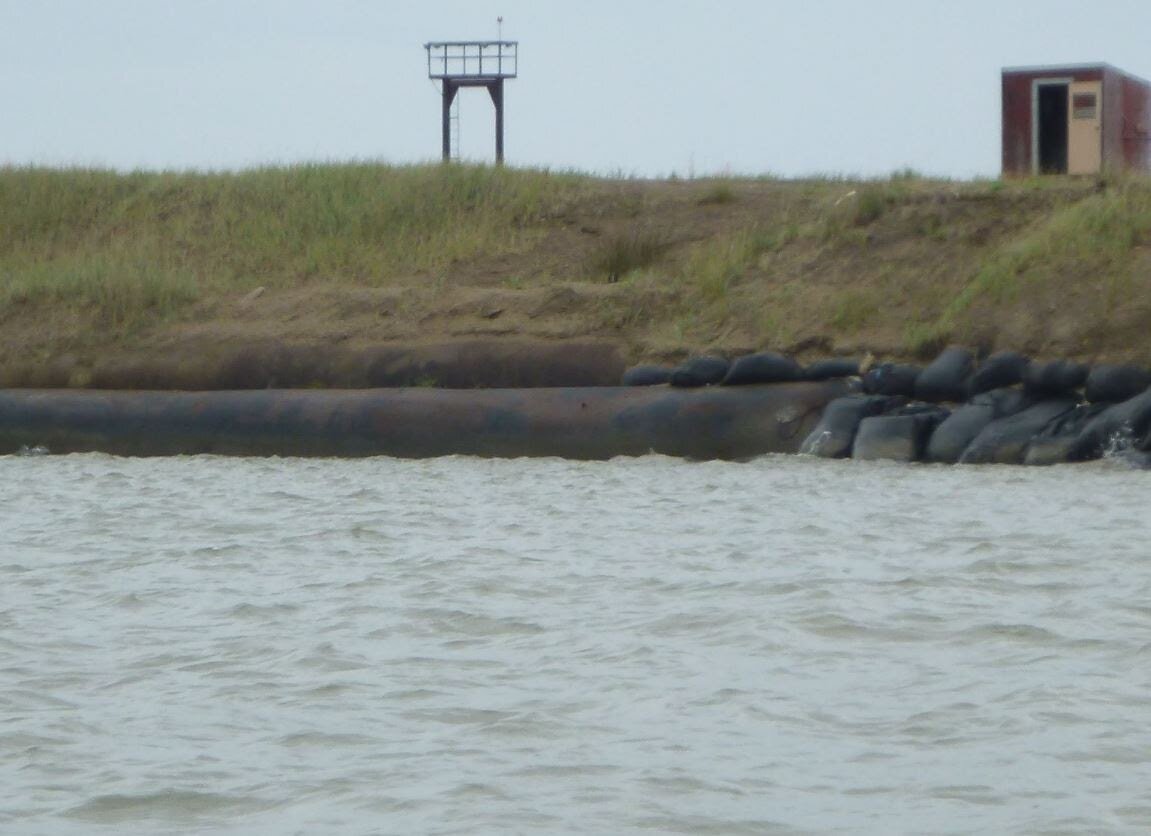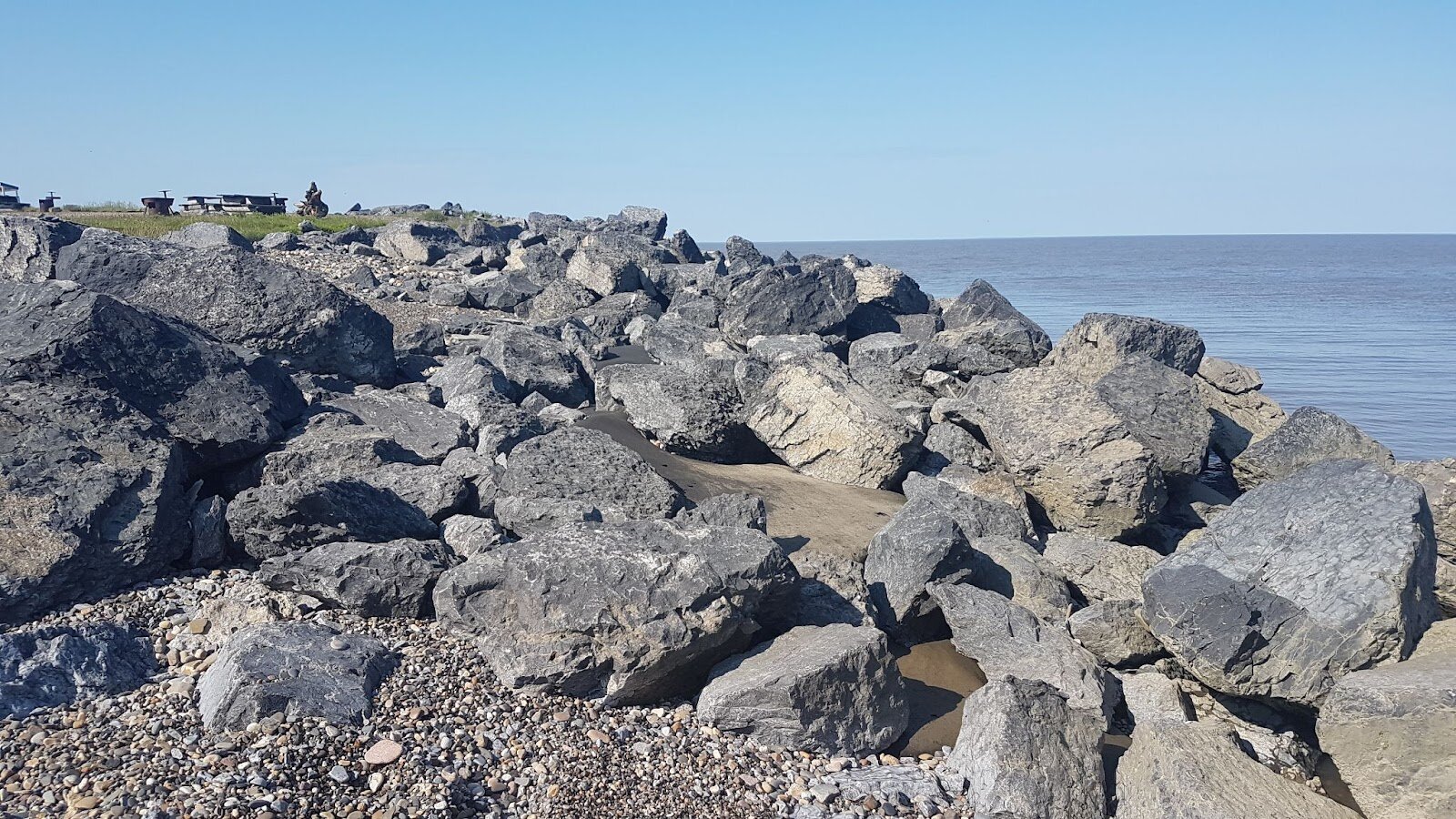Tuk Adaptation
-

Baird Erosion Mitigation
At the April 11, 2022 Community meeting, Baird presented their design for erosion mitigation on Tuk Island and the coast of town. The animation of the design can be found by clicking the link below.
Since the 1970s, a variety of strategies to slow erosion on Tuktoyaktuk's west shore have been tested, to limited success. Many reports have been produced over the years concerning past shoreline protection strategies and the recommended next step.
Below is a timeline of the actions that have been taken.
To date, erosion continues to create challenges for the community. Erosion mitigation efforts are one part of an adaptation pathway, providing the community with time to decide what the next step in the adaptation process will be.
References
[1]Aré. 1988. Thermal abrasion of sea coasts. Polar Geography and Geology, 12, p.1-157.
[2]Wolfe et al. 1998. Coastal permafrost investigations along a rapidly eroding shoreline, Tuktoyaktuk, N.W.T. In: Lewkowicz & Allard (eds.) Proceedings of the 7th International Conference on Permafrost, p. 1125-1131.
[3]Aveco. 1986. Shoreline erosion protection Tuktoyaktuk. Report for the Government of the Northwest Territories, Public Works and Highways.
[4] Tarin Resource Services. 2010. Aerial imagery of Tuktoyaktuk and surrounding areas.
[5] USGS / USGov. 2006. Longshore. https://commons.wikimedia.org/wiki/File:Longshore_i18n.png
[6] Baird. 2019. Tuktoyaktuk Coastal Erosion Study. Report for the Government of the Northwest Territories, Municipal and Community Affairs.
[7] Public Works Canada. 1976. Shore erosion and protection study, Tuktoyaktuk, Stage 2 Report Volume 1. Report for the Government of the Northwest Territories.
[8] UMA Engineering Ltd. 1994. Tuktoyaktuk shoreline protection studies, phases ii and iii, interim report no. 2. Report for the Government of the Northwest Territories, Department of Municipal and Community Affairs.
[9] Solomon & Covill. 1995. Impacts of the September 1993 storm of the Beaufort Sea. In: Proceedings of the 1995 Canadian Coastal Conference, Vol. 2
[10] Solomon. 2001. Tuktoyaktuk risk assessment 2001. Appendix A of Hamlet of Tuktoyaktuk Shoreline Erosion Progression and Community Impact Study (UMA 2002).
[11] Trillium Engineering and Hydrographics Inc. 1997. Tuktoyaktuk erosion control using monolithic concrete slabs. Prepared for Hamlet of Tuktoyaktuk.
[12] Baird. 2021. Tuktoyaktuk Erosion Mitigation. Report for the Hamlet of Tuktoyaktuk and the Inuvialuit Regional Corporation.
[13] Barnhart et al. 2014. The effect of changing sea ice on physical vulnerability of Arctic coasts. The Cryosphere, 9. doi: 10.5194/tc-8-1777-2014
[14] Dallimore et al. 1996. Deep-seated creep of massive ground ice, Tuktoyaktuk, NWT, Canada. Permafrost and Periglacial Processes, 7, pp. 337-347.
[15] Héquette & Barnes. 1990. Coastal retreat and shoreface profile variations in the Canadian Beaufort Sea. Marine Geology. 91. doi: 10.1016/0025-3227(90)90136-8
[16] Thomson & Rogers. 2014. Swell and sea in the emerging Arctic Ocean. Geophysical Research Letters. doi: 10.1002/2014GL059983





